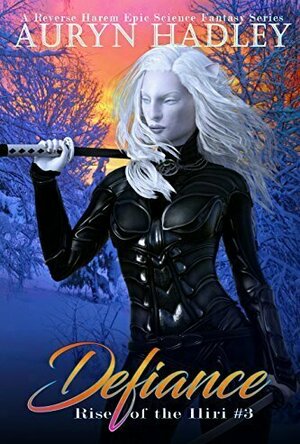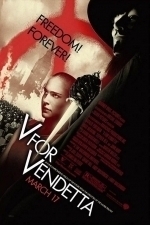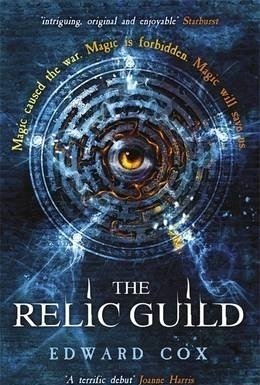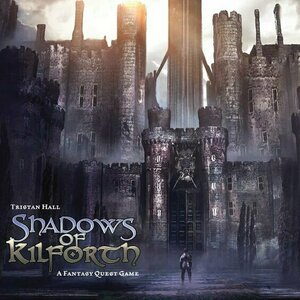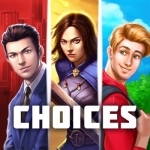
Choices: Stories You Play
Entertainment and Games
App
One choice can change everything! Fall in love, solve crimes, or embark on epic fantasy adventures...
Lyndsey Gollogly (2893 KP) rated Defiance (Rise of the Iliri #3) in Books
Mar 3, 2020
Salryc Luxx has come a long way in just four years, from slave to conscript, to elite Black Blade assassin, rising rapidly as her extraordinary abilities are revealed. Promoted to lieutenant after capturing a valuable shipment of metals and laying waste to the invading force, she and Cyno, her partner (in war and love), have been entrusted with a dangerous mission: to assassinate the King of Anglia and the five nobles in line for the throne, leaving the path to ascension clear for their own leader.
That’s one side of the story. The other is that she and Cyno have been assigned this suicide mission as Parliament’s first pass at removing the iliri taint from the military. Either way, without the strength of allies, the Conglomerate of Free Citizens cannot turn back the invaders, whose goal is to wipe out the whole iliri species, so Sal and Cyno are the only hope of ending the continental war devastating their species. Traveling for months, they are so far away from their home base that they’re beyond the mental link that connects the pack. They remain committed to their mission—and to each other, but… unhappily disturbed. They can only hope their separation from the pack bring them closer together. But the danger is, in the absence of the pack, their bond will wither.
A kind deed, helping what they take to be a wounded animal, leads to the discovery of their true nature, to strengthening and re-energizing their pack, and to a surprising alliance that offers hope for the future. The wounded animal, they learn, is a graour wolf, a species of ferocious warriors with language and traits nearly identical to iliri. When two of them ask to join her pack, Sal recruits them as Black Blades and the iliri are no longer the only dog in the fight for iliri freedom.
But Anglia is nothing like the Conglomerate of Free Citizens. Anglians discriminate based on gender, not species. Iliri are thought to be just a myth--until Sal shows her face. To convince the king and his council that yes, a woman really can be a soldier, she's going to have to make her own rules. The enemy is moving. She doesn't have time to deal with outdated court manners.
As the defiance of an entire species rises up in her, she really has no choice—she’ll just have to change the world.
Women readers will thrill to the reverse harem idea that pushes the boundaries of epic fantasy in this second world series that may remind some of Avatar without the scary beasts; or even Game Of Thrones, but happier, with more color—and a dazzling female protagonist. Fans of Anne McCaffrey’s Dragonriders of Pern will find Sal’s planet Ogun a thrilling destination for their next fantasy fix
They just keep getting better! Sal and Cyno are out on their own and they are kicking up a storm! We get to meet the Graour who the Iliri are descended from! We get a chance to see a whole new world building. I love the new characters and you are with them every step of the way on the battlefield it's also such a good feeling when the black blades are all back together and loving their new pack mates. It was only a matter of time before Cyno became her number 1 I'm glad Blaec took it well. Looking forward to book 4!
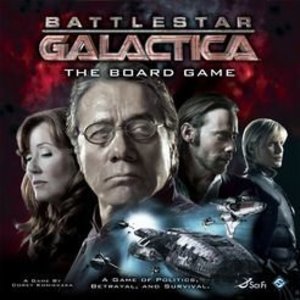
Battlestar Galactica: The Board Game
Tabletop Game
Battlestar Galactica: The Board Game is an exciting game of mistrust, intrigue, and the struggle for...
RəX Regent (349 KP) rated V for Vendetta (2005) in Movies
Mar 7, 2019
We ended up with a dull, overly bombastic and ponderous take on a much more subversive novel, with stereotypical fascist villains, shown to have taken power by releasing a virus upon the country's population, rather than the comic's thesis on the apathetic voters, legitimately electing them.
This is Hollywood does Britain, and as usual, they got it wrong. This is a sci-fi fantasy, where the hero/terrorist dons a Guy Fawkes mask and romantically spreads revolution across the country. But Hugo Weaving's ranting, good though he always is, is just boring and overblown. He is a Nutter and not in the good sense. I don't understand what gives him the right to blow up Parliament for us? I think that he's the other side of the same coin; a dictator in his own right. Is this the point? Maybe, but that point is lost when the film is trying to walk the fine line between epic political film-making with an edge, and a major comic book adaptation by the creators of the revolutionary Matrix. Though, the ill-conceived sequels should have served as a warning to us all as to what to expect from this project.
When I first watched this, I thought it was okay, but on repeat viewings it just continues to fall further and further down in my estimation. Boring, contrived, and misconceived. The Brothers Grimm Wachowski need to rethink their strategy and their role in the business and they are in no way, shape or form serious filmmakers. They have a fantastic and they did have a revolutionary view of cinematography, but as for being deep and meaningful writers... more ponderous and self absorbed than anything else.
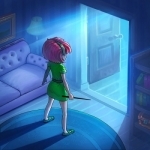
Ghost Town: Mystery Match Game
Games and Stickers
App
Epic journey leads you in abandoned township to help the cute local characters. Exciting plot about...
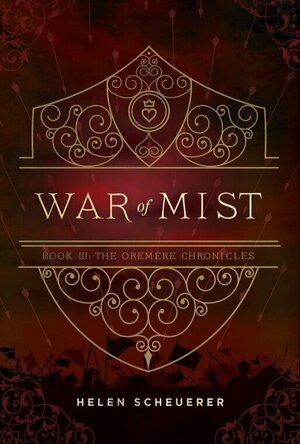
War of Mist (The Oremere Chronicles #3)
Book
War is here. Toxic mist drives all life to the brink of destruction and the conqueror queen, Ines,...
Hazel (1853 KP) rated The Relic Guild in Books
May 30, 2017
Edward Cox invents a new magical world in his epic fantasy novel The Relic Guild. Magic is a thing of the past. Since a great war forty years previously, magic has been banned. Back in the day the Relic Guild was made up of people with various magical abilities – empaths, illusionists, changelings – but a great war got rid of all those with magic, all but three that is. Marney, Samuel and Van Bam are the only surviving agents of the Relic Guild. In their old age they have not needed to use their abilities that much until evidence that a particular infamous Genii, Fabian Moor, did not perish as he was thought to have done. Moor kidnaps Marney leaving Old Man Sam and Van Bam to hunt him down with the help of a young changeling, Peppercorn Clara, who, until now, had been hiding her illegal magical gift.
It took a long time to get into the novel and understand what was going on. It was confusing as to who was good and who was bad at the very beginning, which did not help in understanding the events occurring. Approximately half way through the pace picked up and became a lot more exciting and easier to engage with. It helped that the narrative alternated between the present and forty years earlier. By providing an insight into history of the Relic Guild the current situation began to make more sense.
Oddly the book begins with an epilogue. Initially I wondered whether that was intentional – maybe parts of the story were to be told backwards – however, on finishing the final chapter it appears that, perhaps, it was an error. There were also a few other mistakes that were obviously missed during the proof readings.
The ending of the story strongly implies that there is more to come. This felt a little annoying as there was no conclusion to, what felt like, an extremely long and slow starting book. I am undecided whether I would want to read a sequel; whilst it would be nice to find out how the situation is resolved, it was not the easiest of books to read. It was also difficult to visualize the setting, particularly the constant reference to a labyrinth.
Overall it was a bit of a disappointment. The blurb set it up to be a really gripping storyline but in reality it was confusing and hard going.
Hazel (1853 KP) rated The Relic Guild in Books
Dec 14, 2018
Edward Cox invents a new magical world in his epic fantasy novel <i>The Relic Guild</i>. Magic is a thing of the past. Since a great war forty years previously, magic has been banned. Back in the day the Relic Guild was made up of people with various magical abilities – empaths, illusionists, changelings – but a great war got rid of all those with magic, all but three that is. Marney, Samuel and Van Bam are the only surviving agents of the Relic Guild. In their old age they have not needed to use their abilities that much until evidence that a particular infamous Genii, Fabian Moor, did not perish as he was thought to have done. Moor kidnaps Marney leaving Old Man Sam and Van Bam to hunt him down with the help of a young changeling, Peppercorn Clara, who, until now, had been hiding her illegal magical gift.
It took a long time to get into the novel and understand what was going on. It was confusing as to who was good and who was bad at the very beginning, which did not help in understanding the events occurring. Approximately half way through the pace picked up and became a lot more exciting and easier to engage with. It helped that the narrative alternated between the present and forty years earlier. By providing an insight into history of the Relic Guild the current situation began to make more sense.
Oddly the book begins with an epilogue. Initially I wondered whether that was intentional – maybe parts of the story were to be told backwards – however, on finishing the final chapter it appears that, perhaps, it was an error. There were also a few other mistakes that were obviously missed during the proof readings.
The ending of the story strongly implies that there is more to come. This felt a little annoying as there was no conclusion to, what felt like, an extremely long and slow starting book. I am undecided whether I would want to read a sequel; whilst it would be nice to find out how the situation is resolved, it was not the easiest of books to read. It was also difficult to visualize the setting, particularly the constant reference to a labyrinth.
Overall it was a bit of a disappointment. The blurb set it up to be a really gripping storyline but in reality it was confusing and hard going.
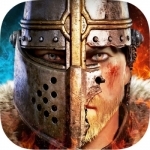
King of Avalon: Dragon Warfare
Games and Social Networking
App
Make friends and battle enemies across the globe, your dragon and throne await! Get your armor on,...
Purple Phoenix Games (2266 KP) rated Shadows of Kilforth: A Fantasy Quest Game in Tabletop Games
Sep 3, 2020
Shadows of Kilforth is subtitled, “A Fantasy Quest Game.” Right there in the title you find out exactly what you are up against in the very foreboding but unassumingly-sized box. A game set in a fantasy world that is focused on questing. I have to admit up front that this review will be treated a little differently as the rulebook is hefty and nobody wants to read a thorough rules essay on Shadows. So I will give you a very high-level overview of the main steps and then give you my thoughts on how it all works together.
DISCLAIMER: We were provided a copy of this game for the purposes of this review. This is a retail copy of the game, so what you see in these photos is exactly what would be received in your box. I do not intend to cover every single rule included in the rulebook, but will describe the overall game flow and major rule set so that our readers may get a sense of how the game plays. For more in depth rules, you may purchase a copy online or from your FLGS. -T
Shadows of Kilforth is essentially a card and dice RPG-esque adventure game with an Asian-style theme but set in a fantasy world where locations will be devastated into gloom (building upon the first in the series Gloom of Kilforth). The players, as the heroes, have the daunting task of journeying throughout Kilforth’s 25 locations to collect items, allies, spells, and titles to overcome main quests and subquests before every location falls into gloom. These quests usually have the players gathering specific card types to satisfy and complete. Once main player storyline quests, called Sagas, are completed the hero levels up and when they complete their fourth quest in their main Saga they may attempt their Finale and then may finally assault the big boss, the Ancient.
Each turn players have Action Points (AP) to spend on doing different actions: movement, discovering rumours (yes, I know it’s the Queen’s English), confrontations, and regaling a Saga chapter, among several others. Some actions are free actions, called Deeds. These include resolving loot tokens, assaulting an ancient, exchanging items between players, and several others. By using combinations of Actions and Deeds players will be able to travel around collecting those items, allies, and so forth needed to complete their Saga chapters.
To complete objectives and quests, players will typically be rolling dice to meet requirements on the cards. This, as all role-players know, can be either supremely lucky or incredibly and predictably debilitating. Skill checks are abundant in Shadows and diversifying characters may or may not have advantages by being able to complete Fight, Study, Sneak, and Influence tests. Players will win if they can complete their Sagas and defeat the Ancient before all of the locations fall into gloom, signaling the end of the game.
All this, again, is very high-level and there are many intricacies in Shadows that I just cannot go over for the sake of time and the health of my typing fingers. But, the game can be played solo, cooperatively, or competitively. So depending on the mode of play and number of players Shadows can range from a 45 minute foray to multi-hour epics. This is why I have played this solo with one character for my plays.
Components. Shadows of Kilforth is very card-heavy, but also includes other goodies. The cards themselves are firstly quite numerous, but also good quality. I can see myself sleeving this and loving every minute of that process. Aside from the cards, the game includes standees for player pieces on the card map, wooden components to track HP, AP, Fate, Obstacles, Gold, Hidden characters, great swirly 6d6, and also cardboard chits for Loot tokens. I haven’t even mentioned the art yet and that may be the most stunning component in this game! I LOVE a game with great art, and Shadows has simply amazing art. This is not usually my style of game art either, but it is so pleasing and everything makes sense and gets me immersed in the game. Everything provided is wonderful quality and an absolute joy to use during play.
Ok so like always, we place our ratings graphic right at the top of our posts so our readers can see right away what we think of the game. As you can tell, I love Shadows of Kilforth. It has essences of so many games I enjoy pieced together in a very attractive and captivating package. The movement and subsequent destruction of map-cards are reminiscent of Forbidden Island/Desert and Tiny Epic Defenders, which I really love (don’t hate – it’s a good game). The gathering of select card types and returning to a location to complete feels like fetch quests in MMORPGs (Final Fantasy XI being my main squeeze for many years). Obviously dice skill checks and level ups from tabletop RPGs are in there as well.
Shadows is just such a great collection of mechanics that I love that I can see myself playing this game over and over and over. Caveat: I will never play this any way other than absolutely solo. My first play, yes a learning session, was just shy of two hours from setup to tear-down. Adding players will increase game length, and playing with AP-prone friends is a no-go for me on Shadows; I had to reference both the excellent provided cheat sheet and the rulebook throughout the play but I eventually got the hang of it and was able to fly through. I may play this solo but with multiple characters cooperatively someday, but I do not wish to play this with other people. Ever.
So here’s my final thought. Shadow of Kilforth is a beefy game, but is well worth the time and effort to learn and play a couple times before passing judgment. It has everything I love in a game and I can’t stop thinking about it. I want to play all the different Race/Class combinations and just dunk on all the Ancients. If only my dice didn’t hate me so much. I will certainly be keeping this one forever, and if you are a fan of fantasy themed adventure card games with heavy use of dice and cool components, DEFINITELY take a look at Shadows of Kilforth. As I am the only one who has played this, I speak for the team in saying Purple Phoenix Games gives this one a 6 / 6. Treat yoself to this one, folks.
